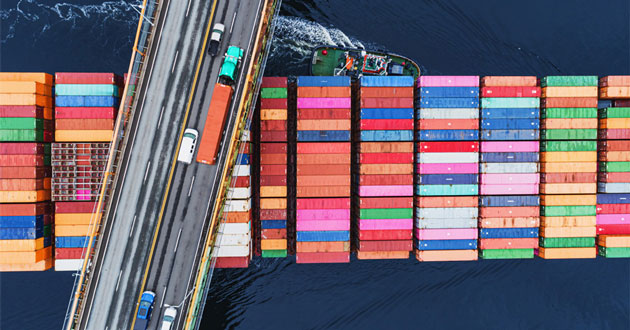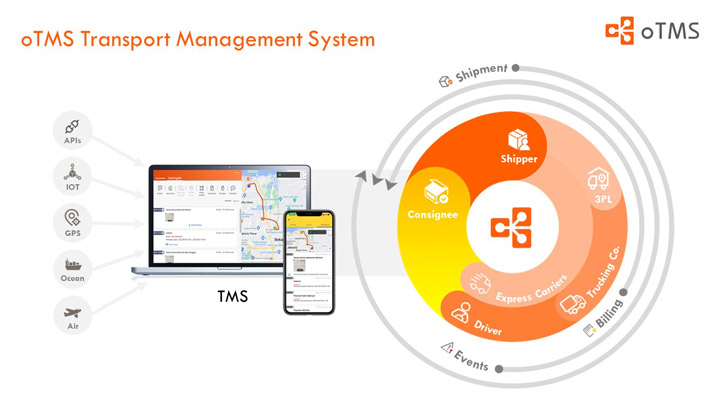Transportation and Logistics Industry – Year End Recap and Outlook
 Page views: 3,318 times
Page views: 3,318 times
2022 is still a year in which the transportation and logistics industry faces many challenges and unknowns. With the New Year approaching, we will take you to review what impacting events have occurred in the transportation and logistics industry this year, as well as the outlook for the industry from the global business consulting agency FTI Consulting.
1. Impact of E-commerce Growth
With the omnichannel approach to e-commerce retail gaining ground, it has become imperative for logistics providers to adopt automation and newer technologies such as AI, geo-fencing, IoT, and data analytics to make the delivery and returns experience seamless and cost-effective for both customers and retailers. Rising adoption of analytics-powered dynamic route planning systems is facilitating logistics companies in optimizing operations and providing cost-effective and seamless experience to both customers and retailers.
2. Impact of Russia’s Assault on Ukraine and Covid-19
The conflict has disrupted the supply of key raw materials. Freight has been re-routed, derailed, and suspended from surrounding areas disrupting the global supply chain network.
Despite the threat of the Omicron variant, the near-term outlook for the global economy is positive. global supply chain is recovering in an orderly manner, international trade is growing, especially in Europe, America, and the Asia-Pacific region, and the global economic recovery is expected to accelerate in the next 2-3 years. However, with the demand for logistics services growing and the pandemic-led labor shortage, there is increasing pressure on the supply of labor, particularly in the trucking industry, which is facing a major shortage of drivers.
3. High Freight Cost
Shortage of shipping containers is emerging as a serious concern as the demand for Asian exports increased strongly, filling all available vessel capacity and leaving equipment stranded in the U.S. and EU. Port congestion, particularly along the U.S. West Coast, has turned out to be a major issue for shipping companies, as ships now must wait longer to get unloaded, which results in higher costs.
4. ESG Risk Framework
Amid mounting pressure from customers, employees, regulators, and investors, T&L providers are prioritizing the adoption of more sustainable processes to align with evolving market realities and to gain competitive edge, however, there are only few companies that have internalized these processes.
5. Workforce Diversity
Workforce diversity within the Transportation & Logistics (T&L) industry lags significantly, when compared with other industries; hence, industry players (such as DHL, Maersk, and XPO Logistics) are prioritizing the adoption of policies that ensure diversity and inclusion within their workforce.
Global Logistics Market Outlook
The global logistics market is expected to grow at a 6.8% CAGR during 2022-2030, particularly due to surge in e-commerce logistics, containers shortages, closure of major ports causing port congestion, shortage of truck drivers, andrestricted capacity in the air freight market. APAC will be the largest logistics market globally, holding ~45% of the total market share, and is expected to outperform other regions in the future due to positive outlook for emerging economies in the region. Asia is expected to contribute ~50% of global trade growth by 2030.
As the Asia-Pacific region gradually keeps up with the digitalization process in North America, the popularity of the Transport Management System is continuously growing. More and more enterprises are using TMS to manage their transportation network. Therefore, as a pioneer of transportation management platform, oTMS launched international version of TMS, and Singapore entity established in 2022 to help enterprises in the Asia-Pacific region to accelerate the digitalization of their local and international logistics and transportation management systems, effectively supporting the continuous growth of their business in the Asia-Pacific region.
Through the oTMS transport management system, enterprises can manage orders and shipment, connect shippers, carriers, 3PLs, drivers and consignees on a single, automated end-to-end shipment workflow, improve shipment visibility for internal and external parties leading to a better customer service experience and brand value creation. Enterprises can also manage freight cost with accurate, automated system billing and cost allocation that also reduces time and workload of monthly reconciliation.

Many large and medium-sized enterprises have chosen oTMS to manage their daily transportation execution, covering multiple industries such as retail, automobile, industrial manufacturing, fashion, medicine, and logistics, and the cumulative volume of processed orders exceeds 500 million.
Sources: Transportation and Logistics Industry – Year End Recap; FTI Consulting









